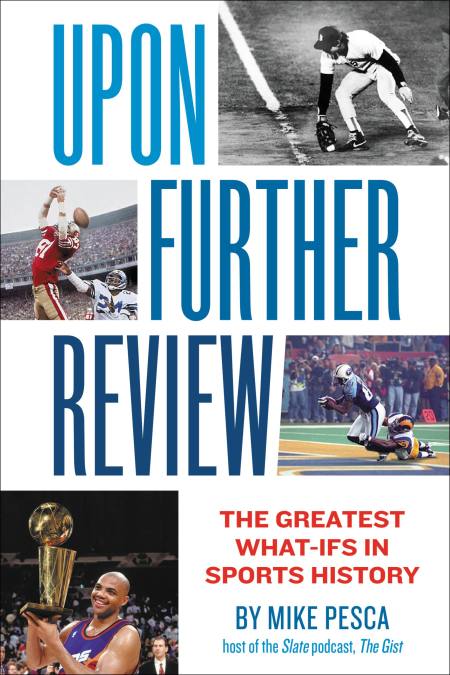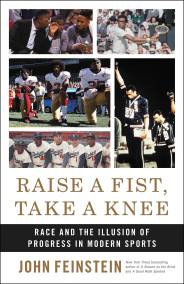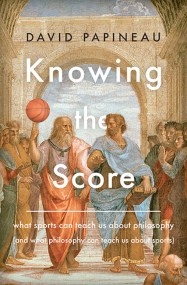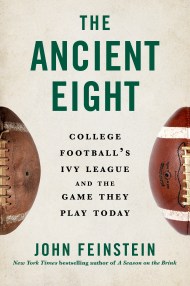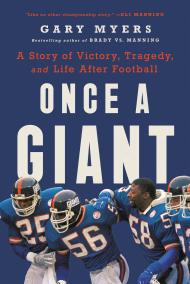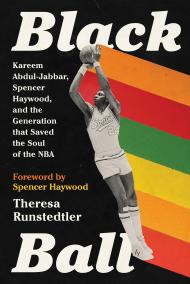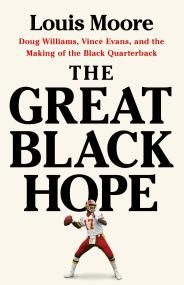What If the 1999 U.S. Women’s National Soccer Team Had Lost the Women’s World Cup?
Louisa Thomas
Brandi Chastain caught the ball tossed by the referee and placed it on its mark. She did not look at the goalkeeper, nor around her at the shrieking crowd. The moment was tense, the stakes high. If she made the penalty kick, the U.S. women would defeat China to win the 1999 Women’s World Cup. There were more than ninety thousand people—including the president of the United States—in the stadium watching, waiting, wishing, and they were loud. Millions more Americans were watching at home, the largest American audience ever to watch a soccer game—men’s or women’s. More than the result of a tournament seemed to turn on this shot.
It was treated as a test of whether a woman’s team sport could capture the imagination of the American public—and then keep it. Chastain knew it. “We’re at the epicenter of a big rock being thrown into a huge pond,” Michelle Akers had said as the team prepared for the final. “We just don’t know what the ripple effect will be.” Win, and the ripples would spread; lose, and they seemed likely to recede and leave little in their wake.
Chastain waited for the whistle that would signal her shot. The odds were in her favor; penalties are successful around 70 percent of the time. But there were crosscurrents against her. Earlier that year, in March, Chastain had hit the crossbar on a penalty kick against China’s goalkeeper Gao Hong at the Algarve Cup. China had won that game—and the title. Before selecting the players to take the extra shots at the Women’s World Cup, the American coaches hesitated over whether to choose Chastain for the critical fifth slot. They worried that her PKs had become too predictable for goaltenders. Perhaps the Algarve Cup—or the own goal that Chastain had knocked into the American net during the quarter-finals—was also on their minds. Just before the penalty kicks began, the U.S. head coach, Tony DiCicco, came over to Chastain and told her that she would take a shot, but she had to take the kick with her left foot. She agreed that she would. There was only one catch: She had never taken a penalty kick left-footed in a game before.
The whistle came, and Chastain started her run. She struck the ball sharply, and it flew sharply off her laces.
July 10, 1999: China wins the Women’s World Cup 5-4 in a penalty shootout. The Americans’ loss gets a headline on all the front pages, along with a picture of Chastain, crumpled on her knees, hiding the tears on her face with the hem of her shirt. She is the goat—but only for a moment. Quickly, she is forgiven, and then, as quickly, she is forgotten. So, for the most part, is the team. The U.S. women’s national team’s strong run is applauded, and the unbelievable turnout and support is noted as a harbinger for the growth of women’s sports, but attention returns to where it had been: the NFL, MLB, NBA, college football and basketball, the stray NHL playoff series.
In the ensuing years, success at the World Cup level continues to elude the national team. At the Olympics, the Americans bring home gold medals, but the team does not monopolize the American public’s attention. There are rivals, not only male athletes but female stars, mostly gymnasts and swimmers. During the Olympics, the team is one among many notable stories, perhaps at a disadvantage to competitors in individual sports, who are easy for networks to follow and feature.
The country’s attention does refocus on women’s soccer every four years for the World Cup in the dead days of summer, when the basketball and hockey playoffs are over, baseball is in a summer lull, and football is still far off—though the off-season activities of football players still often lead the news. Winning might change that, but the U.S. can’t quite seem to pull it out. Four years after its disappointing defeat to China, at the 2003 World Cup, the U.S. team loses to Germany in the semifinals, and four years after that gets blown out by Brazil at the same stage. The team generates significant buzz, but not quite at the level it had attracted in 1999, and outside the World Cup and, to a lesser extent, the Olympics, it fades again. Interest resurges in 2011, when the U.S. records a stunning win over its rival Canada during the semifinals. But it isn’t until 2015 that the U.S. women finally win the Cup, sixteen years after the heartbreak in Pasadena. That team, led by a new generation of skilled, powerful, outspoken stars, redeems and fulfills the legacy of the 1999 team. It becomes a powerful symbol for women’s empowerment, not only in sports but all walks of life.
Still, women’s soccer fails to capture the public attention in a day-to-day way. Hoping to capitalize on the huge television audiences and the hundreds of thousands of people that had flocked to games across the United States during the Women’s World Cup, a women’s professional soccer league is formed after the 1999 World Cup, featuring not only American stars but players from international teams. Despite offering modest salaries to players, the league folds after three years. A few years later, another league is formed, but again, small crowds and little mainstream coverage can’t sustain it, and it, too, folds after three years. Finally, a league is formed with significant support from national federations instead of relying on private financing, advertising, and ticket sales. It manages to survive and attract a fiercely loyal fan base, but it is hardly the juggernaut that men’s major professional leagues are—or even Major League Soccer. Average attendance is in the low four figures (compared to twenty-one thousand–plus for MLS), and many of the salaries are not enough for players who are not members of the national team to live on. Even the stars from the national team do not make anywhere near the kind of money usually associated with professional sports—or even as much as their male counterparts. Several of the biggest stars of the victorious 2015 team sign contracts with European clubs.
Participation levels for women’s soccer continue to rise, a trend that began not with the 1999 team but long before. The 1990s had seen an explosion of interest in the sport, not so much as a result of the women’s victory in the inaugural Women’s World Cup in 1991 but mostly due to the effects of Title IX, passed in 1972. In the late 1970s, there were only a few thousand women playing soccer in high school. By 1991 there were more than 120,000, and by 1999 that number had more than doubled, to 250,000. After 1999, there was a slight slowdown of the sport’s growth—perhaps understandably—before it picked up again. By the time the American women win the World Cup in 2015, the sport has grown another 50 percent, to 375,000. But women’s soccer still ranks below basketball and volleyball in popularity, and only just above baseball/softball.
There are major gains, of course. By 1999, athletes who are women are, in general, no longer regarded as freaks. They are not the curiosities that they were in the 1980s and early 1990s, when those sports that drew on the youth and femininity of their participants—figure skating, gymnastics, even tennis—produced the most popular female athletes. Women’s sports are more often discussed in tones of respect. Young girls grow up wanting to be soccer players and basketball stars, not only ballerinas and princesses. Broadcasters find that there are consequences for sexualizing their subjects or treating gender as comic relief. This trend continues despite that difficult loss in ’99. Still, even these gains are not uncomplicated. It takes ten years after the U.S. women’s loss for ESPN, the self-proclaimed Worldwide Leader in Sports, to focus on women’s sports. It does so by creating a sister site to ESPN.com, espnW, but its focus and tone are different from the flagship site; its layout has a decidedly more feminine style, and its tone is sometimes more celebratory than reportorial. One of its stated missions is to “inspire.”
Commentators may speak of women’s sports more respectfully, but they rarely do it enthusiastically—and they rarely do it at all. In fact, after 1999, the percentage of coverage devoted to women’s sports on network affiliates and ESPN’s flagship SportsCenter actually falls. A USC study finds that the percentage of airtime devoted to women’s sports actually dropped by more than 50 percent between 1999 and 2014 and by 10 percent on SportsCenter. The fall wasn’t from great heights. Fifteen years after the women’s national soccer team lost in 1999, SportsCenter features female athletes only 2 percent of the time. Instead of covering women’s soccer (or any other women’s sports), networks run segments on the question of whether an NBA player recently traded from the Los Angeles Lakers to the Minnesota Timberwolves will be able to find a burrito in Milwaukee, or the heartwarming story of a stray dog that finds its way into the Brewers’ stadium, and whom fans and players call Hank.
Soccer, despite the promise of the game’s growth in the 1990s, the popularity of the 1999 team before its loss, and the consistently high performances on international stages, struggles to get a regular purchase in the sports ecosystem outside the Olympics and World Cup—even among women’s sports. Women’s basketball receives by far the most coverage, with tennis second and golf third.
The women’s national team, despite its overall sustained excellence near the top of the game, is routinely treated—in terms of coverage, crowds, and federation pay—as inferior to the men’s team, even though the men historically have achieved far less success. The women make less money than the men (a pay gap that reflects the overall wage gap between men and women in the United States). They receive smaller per diems and bonuses. They are, at times against their will, forced to play on turf instead of grass. Finally, buoyed by the success of the 2015 team, the national team takes legal action and threatens to strike. After years of conflict, a new bargaining agreement is implemented, and the women’s pay is substantially increased—but, reportedly, not all the way to the level of the men.
It is hard not to wonder how different the situation would be, for women’s soccer and women’s sports more generally, had Chastain made that goal.
Of course, in reality, Chastain did score. The ball slid just inches inside the goalpost, past the diving Hong’s outstretched hand. The crowd detonated, the sound of the screams a high-pitched explosion. Chastain—as she had seen so many male soccer players do in triumph countless times before—ripped off her shirt as she whirled around and slid on her knees, flexing her arms and letting out a cry, exultant. A photograph of that moment—Chastain in her white shorts and black sports bra, abs amazing, muscles flexed, her blond hair disheveled by effort, her head tossed back in a triumphal roar—would be on the cover of Newsweek and Sports Illustrated. In 2014, SI readers voted on that cover as the second-most iconic in the magazine’s history, after only the famous “Miracle on Ice” photograph during the 1980 Olympics.
That victory made the U.S. women more than household names, more than superstars; it immediately made them symbols of the progress of women’s sports and women’s empowerment.
Here’s the thing: The scenario I just sketched out if the U.S. team had lost is exactly what happened when they won.
Two professional leagues failed. Coverage of women’s sports changed in tone and nature but did not increase. The women’s national team struggled to achieve the economic parity that it—and many—believed it had earned.
But of course, this account leaves out something critical, something that isn’t immediately obvious. For starters, startling advancements are rarely immediate; the path of progress is long. More important, for thousands and thousands of people—perhaps in ways they are not entirely aware—the 1999 Women’s World Cup victory had profound and enduring effects, even if they were effects that can be hard to measure.
For millions of Americans watching that game—especially young women—the women’s national team represented something they had never seen. For starters, it was a team—a collective, not a compelling personal story that could be set to strings and aired as a sob segment on NBC, but a unit of women bound by training and skill. Individual female athletes had become stars before, but no women’s team had ever commanded such a big stage. Rooting for a team was different from rooting for an individual. You could wear a jersey; you could debate strategy; you could follow as if you were a fan of the Lakers. It seemed to have the same legitimacy. More than that, there was a kind of echo effect. I, like many women, was never compelled to buy tickets to any of the women’s pro league games. But as a high school student myself when that team won, I internalized the idea that female athletes deserve respect. And, perhaps even more important, it made me want to be physically and mentally strong; it made me want to play games.
Symbols matter. The famous photograph of Chastain clutching her shirt said something more powerful than any motivational speech about women could have. Women could be muscular, proud of it, and show it. Women could be cool under pressure. Women could be winners. There was something sublime about watching a group of women, working in concert, display their strength and skill. There was something cathartic about the moment when the ball sailed into the back of the net. I will bet that those who watched it, those millions, will never forget it.
It may be that if the 1999 U.S. women’s national soccer team had lost, another women’s team would have come along soon after and had the same emotional, cathartic, galvanizing impact. But it seems to me unlikely. There was so much drama in that moment, that single shot. Winning never matters as much as it seems it should. Still, it was a moment that was primed for them, and which they seized.


